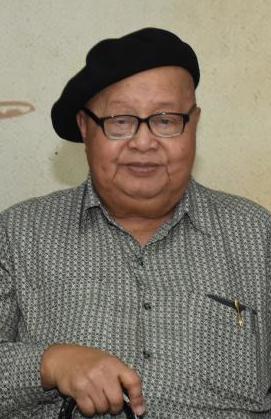
Francisco Sionil José was a Filipino writer who was one of the most widely read in the English language. A National Artist of the Philippines for Literature, which was bestowed upon him in 2001, José's novels and short stories depict the social underpinnings of class struggles and colonialism in Filipino society. His works—written in English—have been translated into 28 languages, including Korean, Indonesian, Czech, Russian, Latvian, Ukrainian and Dutch. He was often considered the leading Filipino candidate for the Nobel Prize in Literature.
Dalagang Bukid is a 1919 Filipino silent film. Directed by José Nepomuceno, it is recognized as the first full-length Filipino produced and directed feature film. An adaptation of the Tagalog sarsuwela of the same name by Hermogenes Ilagan, the film stars Atang de la Rama and Marceliano Ilagan, both of whom reprise their roles from the original sarsuwela production.

The National Library of the Philippines is the Philippines' official repository of information on cultural heritage and other literary resources. It is located in the district of Ermita in Manila, near historically significant offices and institutions such as the Museum of Philippine Political History and the National Historical Commission. As with these entities, it is under the jurisdiction of the National Commission for Culture and the Arts (NCCA).
Kerima Polotan-Tuvera was a Filipino fiction writer, essayist, and journalist. Some of her stories were published under the pseudonym "Patricia S. Torres".

Ambeth R. Ocampo is a Filipino public historian, academic, cultural administrator, journalist, author, and independent curator. He is best known for his definitive writings about Philippines' national hero José Rizal and on topics in Philippine history and Philippine art through Looking Back, his bi-weekly editorial page column in the Philippine Daily Inquirer.
Vaudeville in the Philippines, more commonly referred to as bodabil, was a popular genre of entertainment in the Philippines from the 1910s until the mid-1960s. For decades, it competed with film, radio and television as the dominant form of Filipino mass entertainment. It peaked in popularity during the Japanese occupation in the Philippines from 1941 to 1945. Many of the leading figures of Philippine film in the 20th century, such as Dolphy, Nora Aunor, Leopoldo Salcedo and Rogelio de la Rosa, began their showbusiness careers in bodabil.
José "Pepe" Chichioco Cojuangco Sr., KSS was a Filipino politician who served as Representative of the 1st District of Tarlac in the Philippines from 1934 to 1946. Cojuangco is one of the patriarchs of the Cojuangco clan. He was the father and grandfather of future Philippine presidents Corazon Aquino and Benigno Aquino III, respectively. His other grandchildren include actresses Kris Aquino and Mikee Cojuangco.

The Rosales Saga, also known as the Rosales Novels, is a series of five historical and political novels written by National Artist of the Philippines F. Sionil José. Chronologically, it is composed of five interconnected novels, namely Po-on, Tree, My Brother, My Executioner, The Pretenders, and Mass. The Rosales Saga traced the five generations of two families, namely the Samsons and the Asperri through Spanish and American periods in the history of the Philippines until the period after Philippine Independence. José begun writing the series in 1962 and completed it in 1984.

The María Clara gown, historically known as the traje de mestiza during the Spanish colonial era, is a type of traditional dress worn by women in the Philippines. It is an aristocratic version of the baro't saya. It takes its name from María Clara, the mestiza protagonist of the novel Noli Me Tángere, penned in 1887 by Filipino nationalist José Rizal. It is traditionally made out of piña, the same material used for the barong tagalog.
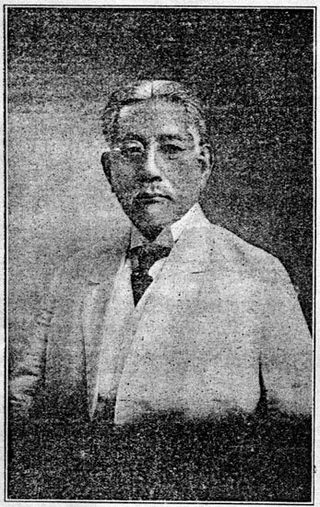
Pascual H. Poblete was a Filipino writer, journalist, and linguist, remarkably noted as the first translator of José Rizal's novel Noli Me Tangere into the Tagalog language.
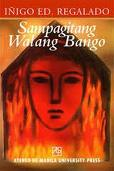
Sampagitang Walang Amoy, also rendered as Sampaguitang Walang Bango, was a 1921 Tagalog-language novel written by notable Filipino novelist Iñigo Ed. Regalado. The theme of the novel revolves around love, romance, treachery, and endurance. In the novel, Regalado depicted the City of Manila during the American occupation of the Philippines but before World War II. Sampagitang Walang Bango was one of the novels Regalado had written during the Golden Age of the Tagalog Novel (1905–1935).
Faustino S. Aguilar is a pioneering Filipino novelist, journalist, revolutionary, union leader, and editor. Faustino was one of the first novelists in the Philippines to explore and present social realism through literature.He was also said that he is the editor of Taliban
.
Ang Mestisa is a well-known Tagalog-language novel written by Filipino novelist Engracio L. Valmonte in 1920. Published in two parts, the novel was divided into two books entitled Ang Mestisa Unang Bahagi and Ang Mestisa Ikalawang Bahagi. The novel was published in Manila, Philippines by the Imprenta Ilagan y Compañia in 1921. It was printed by the Imprenta Nacional during the American period in Philippine history. Later on, the novel was adapted as a zarzuela.
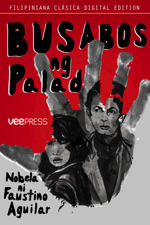
Busabos ng Palad is a Tagalog-language novel written by Filipino novelist Faustino Aguilar in 1909. Apart from tackling the "ills and injustices" in Philippine society, Busabos ng Palad revolves around love, romance, tragedy, and prostitution. The 157-page novel was published in Manila by Manila Filatelica.

Sa Ngalan ng Diyos is a Tagalog-language novel written in 1911 by Filipino author Faustino Aguilar. Controversially, it illustrated how greedy Jesuit priests schemed, manipulated, and took advantage of Carmen, a young, naive, pious, and affluent heiress. The 191-page book was published in Manila by the Limbagan at Aklatan Ni I.R. Morales during the American period in Philippine history (1898–1946).
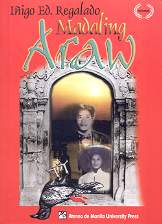
Madaling Araw ("Dawn") is a 1909 Tagalog-language novel written by Filipino novelist Iñigo Ed. Regalado. The 368-page novel was published in Manila, Philippines by the Aklatang J. Martinez during the American period in Philippine history (1899-1946). Madaling Araw won for Regalado a Panitikan Series Philippine National Book Award. The novel is both a romance novel and a political novel.
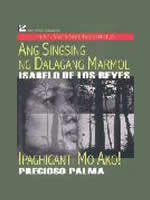
Ipaghiganti Mo Ako...! is a 1914 Tagalog-language novel written by Filipino novelist and dramatist Precioso Palma. The 207-page book was published in Manila by Limbagang Banahaw during the American era in Philippine history (1898-1946). The 1914 version of the novel has an afterword written by Julian C. Balmaceda.

Anino ng Kahapon is a 1907 Tagalog-language novel written by Filipino novelist Francisco Laksamana. The 294-page novel was published in Manila by Santiago L. Abillar and SP during the first few years of American period in Philippine history. The 1907 version was illustrated by P Imperial. The novel was republished by the Ateneo de Manila University Press in 2002. According to the Ateneo de Manila University Press, the novel was written by Laksamana to help provide the readers with a "nostalgic recollection of the period of mournful Filipinoness". According to literary critic Epifanio San Juan, Jr. — apart from being a historical and political novel — Anino ng Kahapon was one of the romance novels and novels about heroic Philippine characters produced by Filipino authors from 1900 to contemporary times.
Ang Lihim ng Isang Pulo: Nobelang Tagalog – "The Secret of an Island: A Tagalog Novel " – is a Tagalog-language novel written in 1926 by Filipino novelist Faustino S. Aguilar. The 353-page novel was first published by Sampaguita Press in the Philippines in 1927. It was republished in Manila by Benipayo Press in 1958.
Frame Up is a 1997 Philippine action film edited and directed by Pepe Marcos. The film stars Raymart Santiago and Jessa Zaragoza. This marks the second collaboration of Raymart and Pepe, the first being the 1992 film Pacifico Guevarra.












